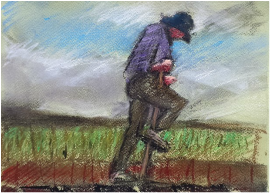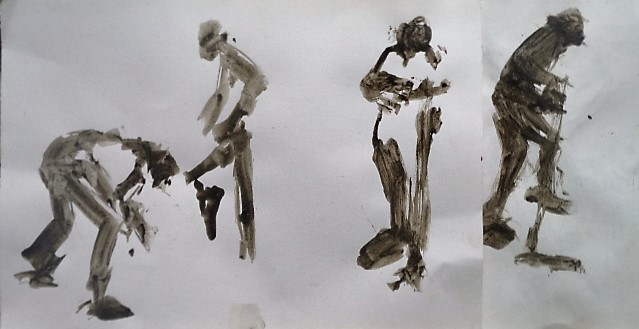
It was getting the soft, brown peat all over my hands and fingers that made me want to draw with it. Artist often worry about managing to match the colours they observe in the world around them - taking handfuls of the stuff itself and even diluting it with water meant there was no need to mix the true colour.
I had made the long journey from Edinburgh to the Western Isles to spend a day on a friend’s peat bank where I observe, draw and photograph him cutting next year’s supply of peats.
Although I was hard at work drawing, I had to lend a hand with the back breaking lifting and laying peats out to dry. As my fingers sank into the soft, rich brown substance, it seemed only natural to want to spread it over my paper and attempt to draw and sculpt the shapes of the working man in front of me.
I had made the long journey from Edinburgh to the Western Isles to spend a day on a friend’s peat bank where I observe, draw and photograph him cutting next year’s supply of peats.
Although I was hard at work drawing, I had to lend a hand with the back breaking lifting and laying peats out to dry. As my fingers sank into the soft, rich brown substance, it seemed only natural to want to spread it over my paper and attempt to draw and sculpt the shapes of the working man in front of me.
The resulting sketches were often incomplete as the peat cutter moved through the motions of his work - the repetitive nature of the task meant drawings could be worked on again with each new bit of information about the particular pose. Their incompleteness and the natural feel of the diluted peat medium has given me some ideas about how these effects could be translated into oil paint - to capture not only this 21st century crofter cutting his peat, but also something of the elusive atmosphere of this tradition of days of old.




 RSS Feed
RSS Feed